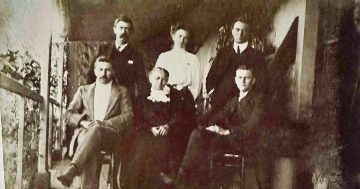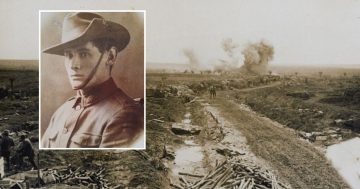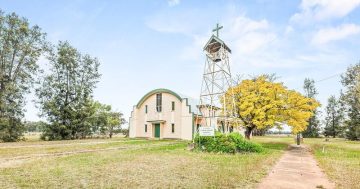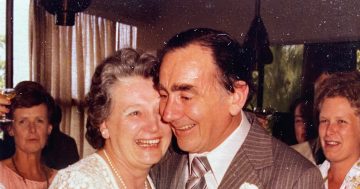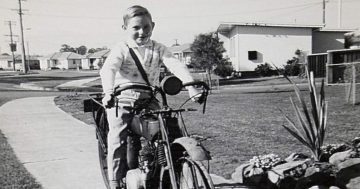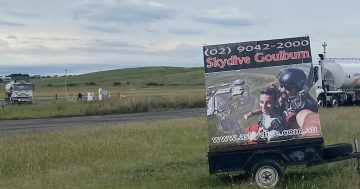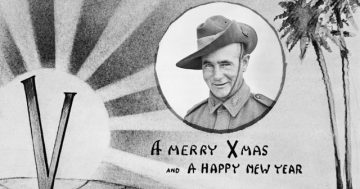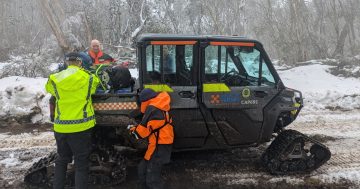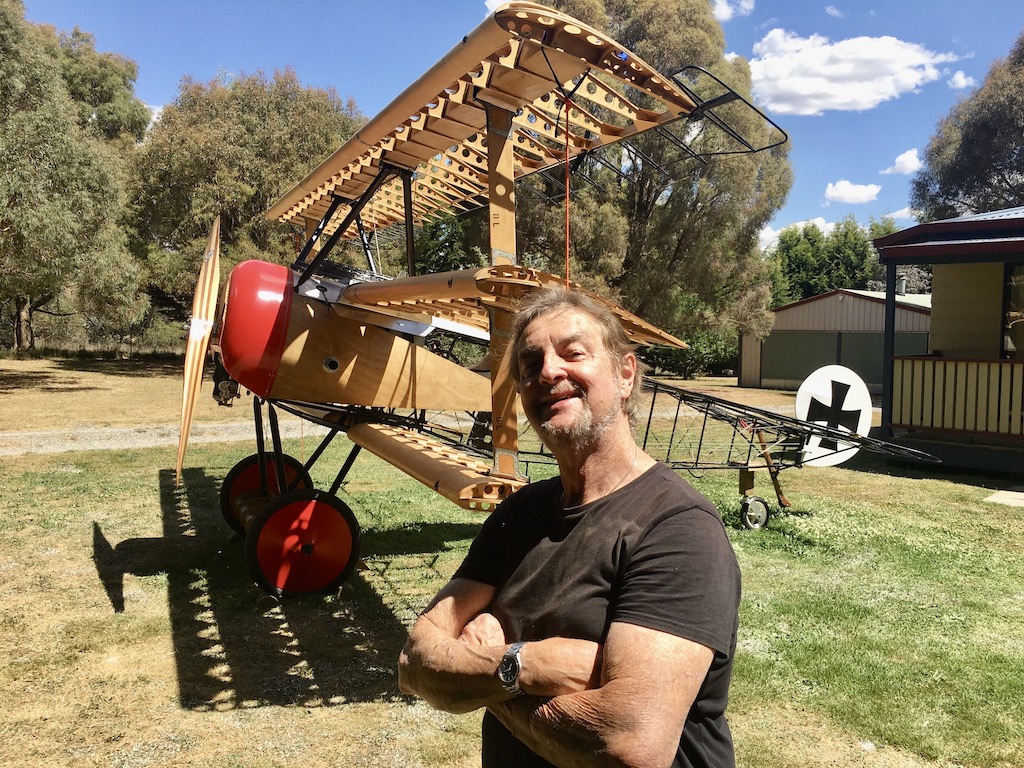
Wolfgang Nesteriuk with his life-sized model of a Fokker triplane, a replica of the Red Baron’s fighter plane that enabled him to win dogfights against the Allies. Photos: John Thistleton.
More than 20 years ago, Wolfgang Nesteriuk began building in his spare time a full-sized replica Fokker triplane made famous by the Red Baron, Germany’s World War I flying ace.
Running a motor mechanic shop in Campbelltown, Wolfgang had limited time for his hobby, but since he retired to a five-acre (two-hectare) property north-west of Goulburn near Grabben Gullen, the famous aircraft with lethal agility began taking shape in his shed.
“The closer I got to finishing it, the more I got excited,” said Wolfgang, who made model airplanes as a boy.
The plane does not fly, but so resembles the Fokker down to the last nail it sends the imagination soaring.
“When the war started, the British had a triplane which was very successful,” Wolfgang said. “The Germans captured a few, were flabbergasted and said we have to build this too. So they did.”
His idea to make a replica came as unexpectedly as these planes did from the clouds.
“One of the mechanics who worked for me came to me and says, ‘I am building a plane’,” he said. “He took me home to his place and showed me, and he was building a kit plane from America with a Subaru engine in it.”
That emboldened Wolfgang. Always interested in engineering, which led him into his mechanic’s trade, he thought: “I can build a Fokker, why not?”
Later, having seen him embark on his ambitious model, Wolfgang’s friend from their school days, Siegfried Weist, showed him an illustration of the plane he had found in a book. Subsequently, the photograph hung for years in his workshop.
Dutch aviation pioneer Anton Fokker produced the triplane with no wire bracing or wing struts as conventional aircraft had in the day. As Baron Manfred von Richthofen – dubbed by the British as the Red Baron – later discovered, the lighter Fokker triplane was unmatched in a dogfight and easily out-climbed and out-looped the Allied force’s aircraft.
One of Wolfgang’s long-time customers bought him British author Paul Leaman’s book Fokker Dr. I Triplane, featuring comprehensive drawings that the British had made after capturing one of the planes from the Germans. Wolfgang enlarged them to see and work from each part.
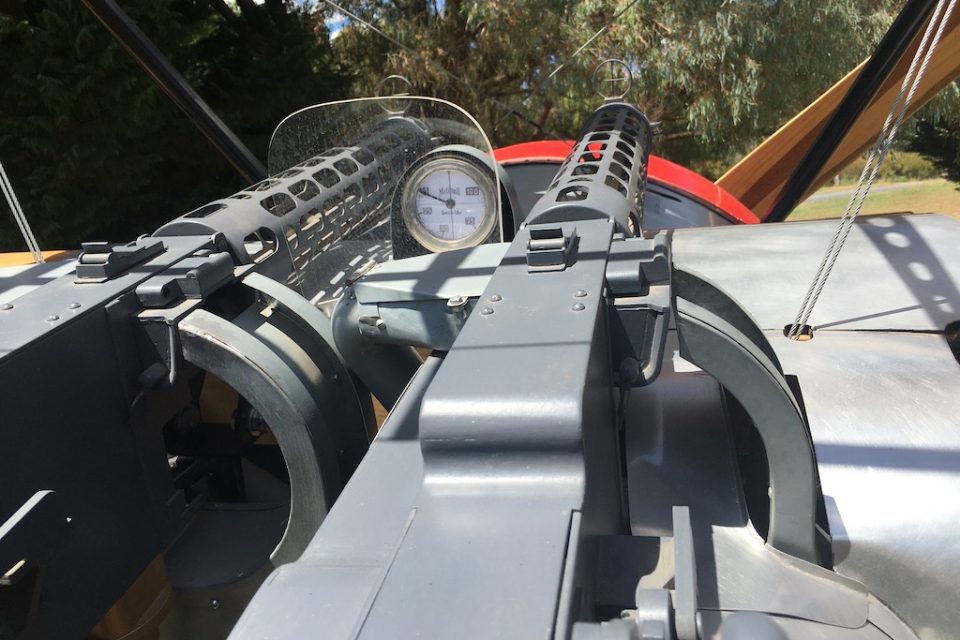

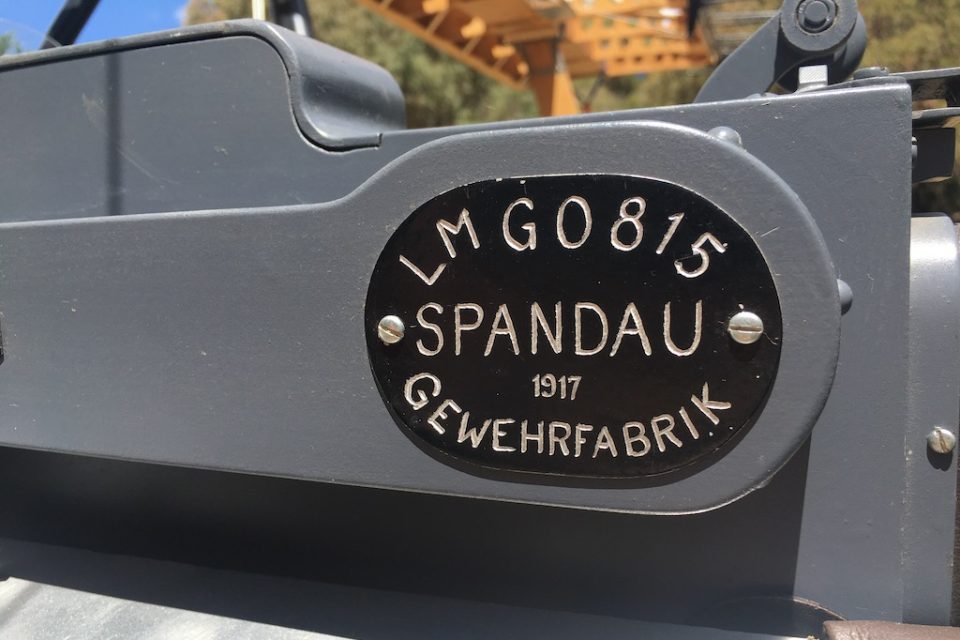
Glued and nailed exactly how it was 100 years ago, the nimble aircraft slowly took shape.
“They used formaldehyde glue in those days. I used external Aquadhere glue, which is better anyhow – it’s waterproof and will hold together no problems,” Wolfgang said.
Then he cast around for parts and ideas, showing photos and drawings to prospective suppliers.
“I know exactly where to get those,” a Goulburn Honda dealer told Wolfgang, and duly imported the motorbike tyres from England. Wolfgang sourced the wheels from a motorbike wrecker and made his own spokes and hub.
Buying walnut and birch for the propellor was beyond his budget, so he used A-grade pine and meranti, a hard timber that fit the bill.
Rejecting an engineering workshop’s quote of $15,000 to make the replica engine casing, Wolfgang made his own metal strips, welded them together and Crookwell panelbeater Tony Evans (an avid collector of antique chainsaws) filled in the piece and finished it off. Wolfgang spray-painted it so it looks like one piece, saving himself a small fortune.
He took a photo of the Fokker’s manufacturing plate to key cutter and engraver Mr Minute in Goulburn Plaza, who made and engraved a replica plate.
Now the retired mechanic will invite the Australian War Memorial to display the Fokker and take ownership of it. Or he may sell it to a collector, so long as it is well looked after. Having no idea of what price to put on it, he would need an offer.

The replica triplane measures 18 feet, 11 inches (5.7 m), with a wingspan of 23 feet, seven inches (7.1 m). The 110-horsepower engine had a limited top speed of 103 miles an hour (165 km/h), but still enjoyed an advantage over the enemy because of its agility.
Wolfgang, who came to Australia from Austria aged eight, and his German-born wife Monika, had never heard of Grabben Gullen until another of his loyal customers invited him to their place about 30 years ago. The couple bought their acreage property and moved there 14 years ago, and the triplane project came with them.
“We love it here,” he said, standing in front of the triplane, out of its shed for the first time and a shining example of craftsmanship spreading its wings in his front yard.







